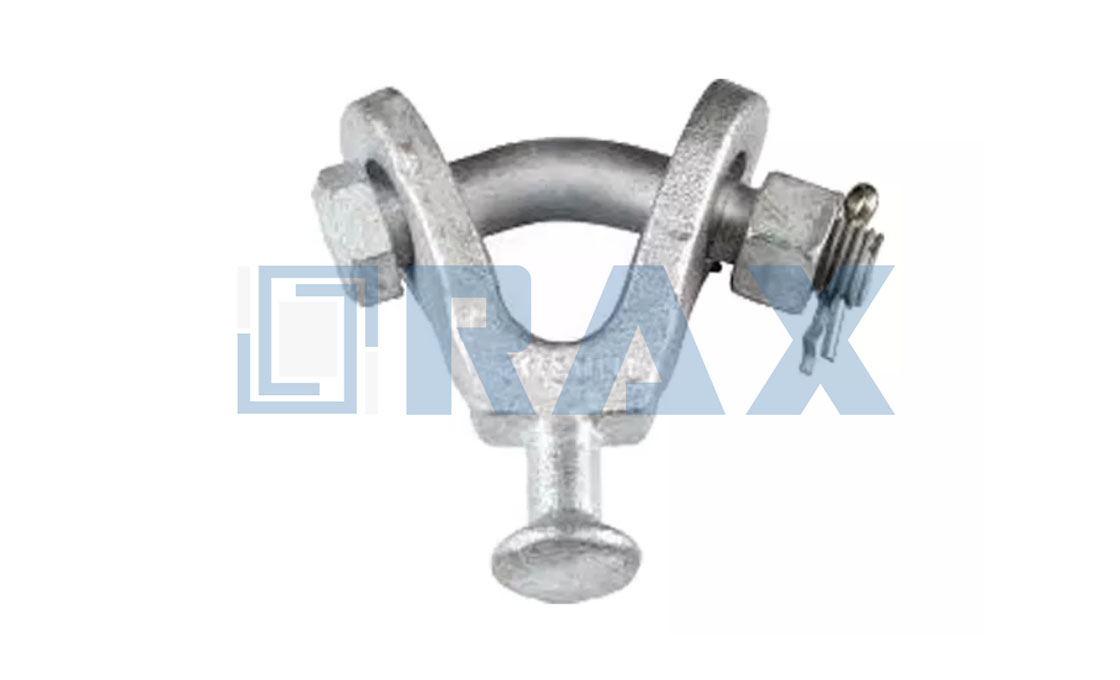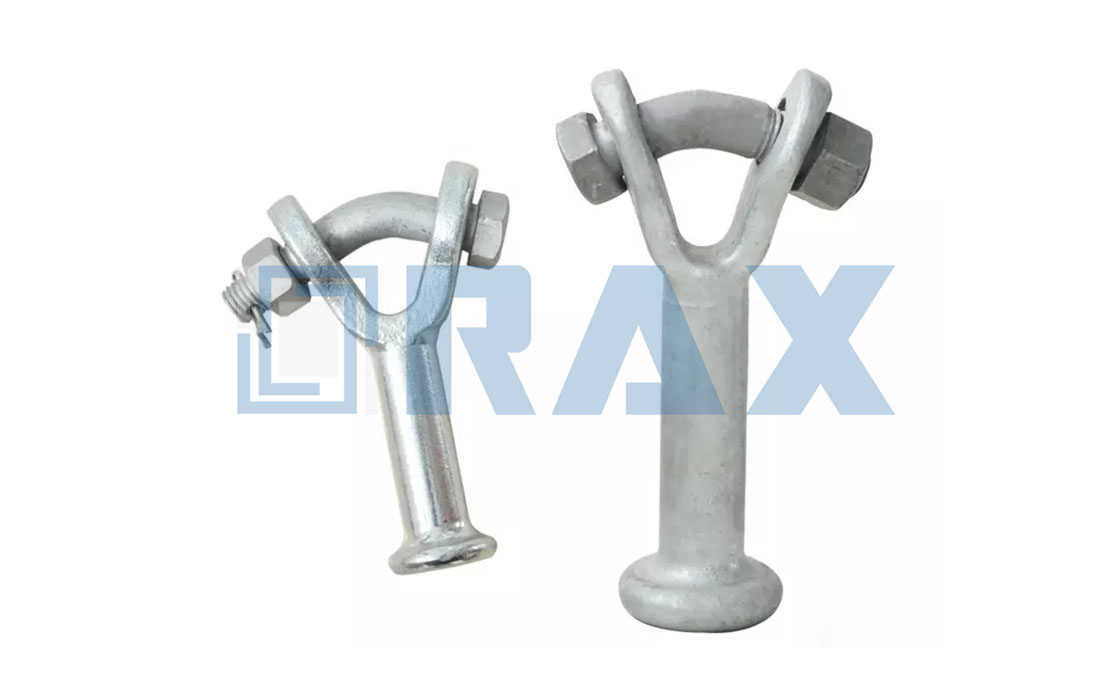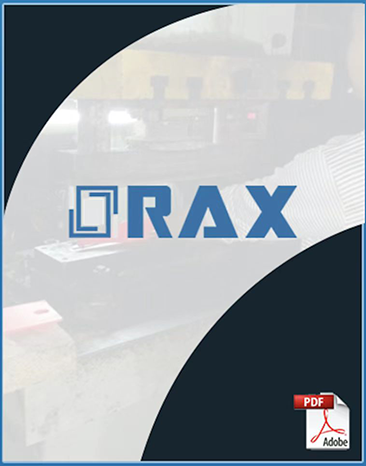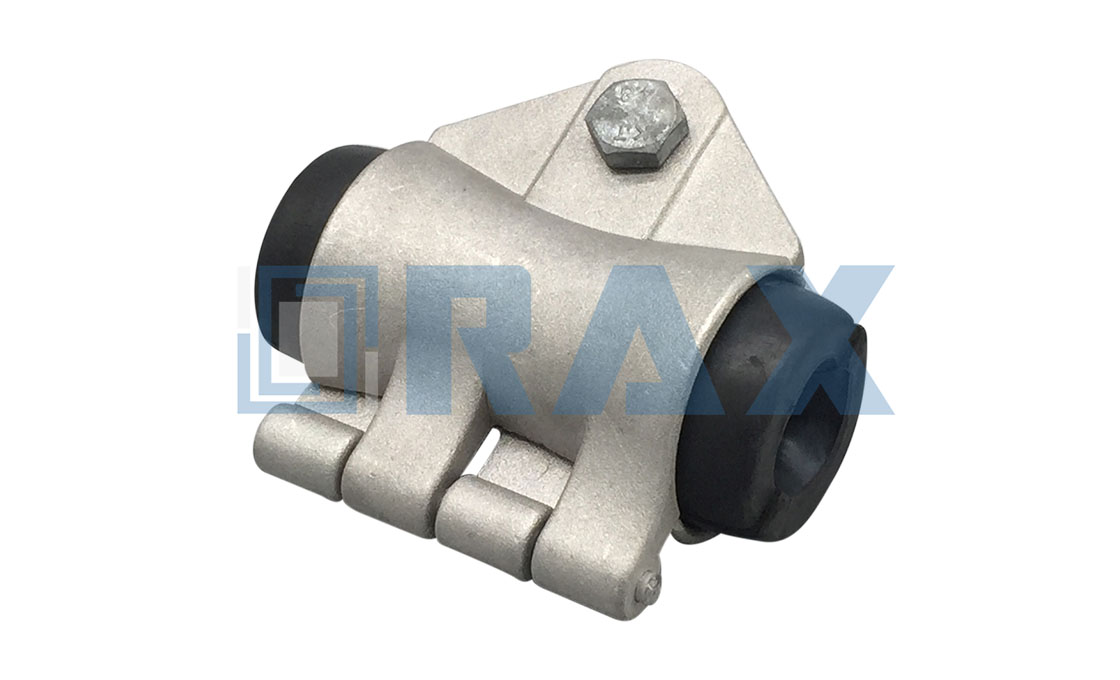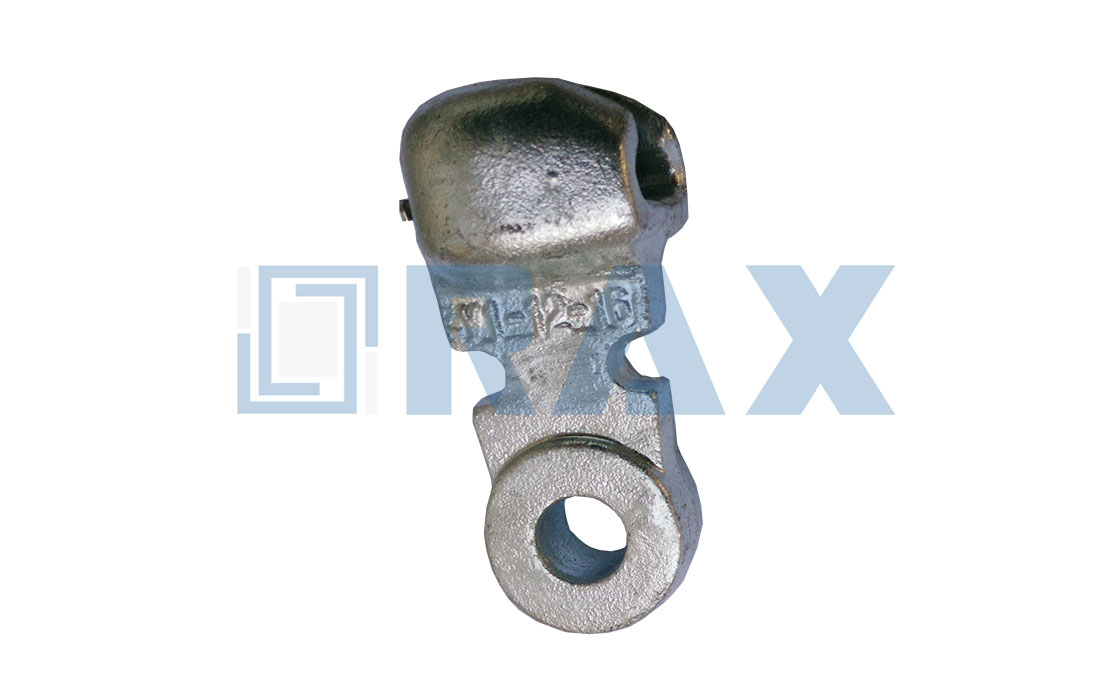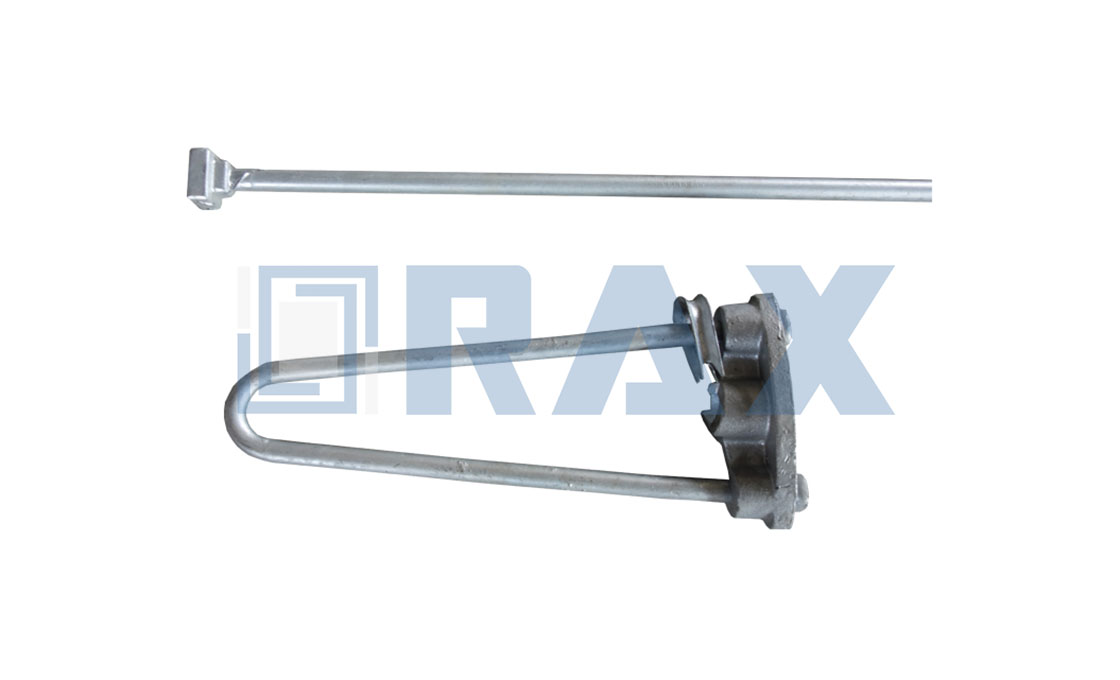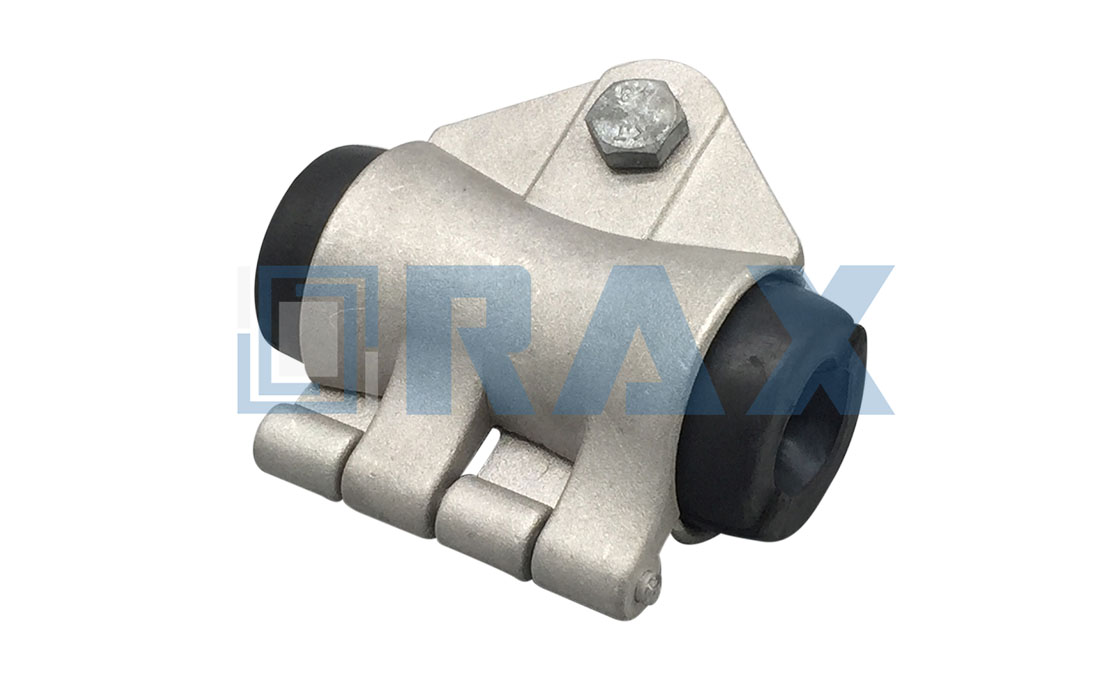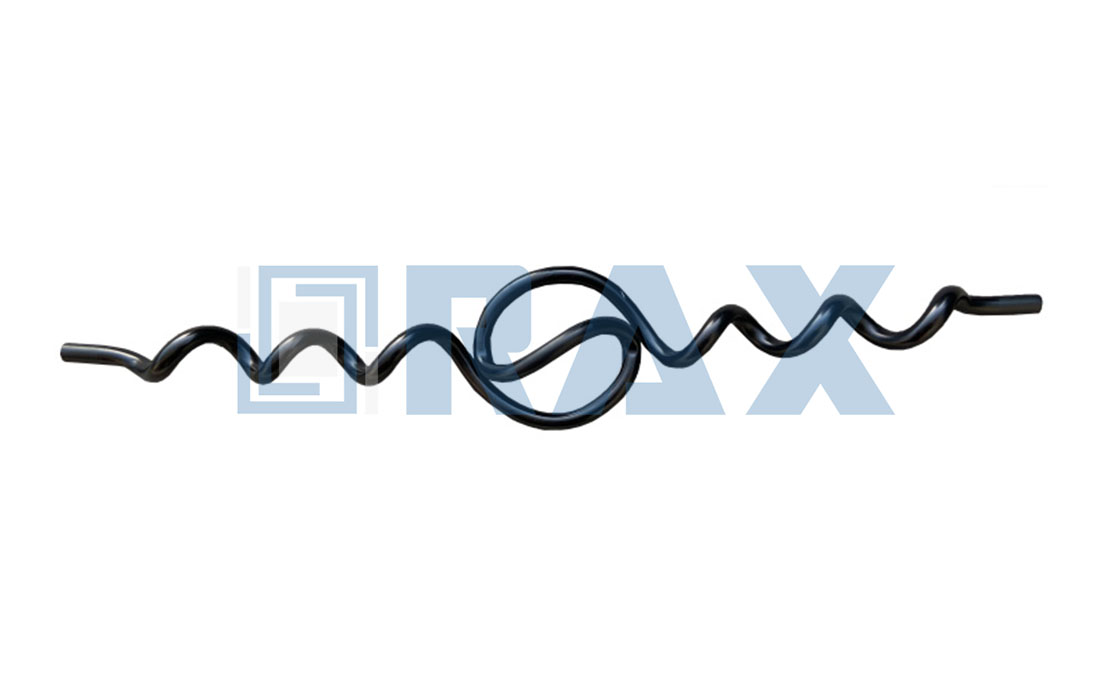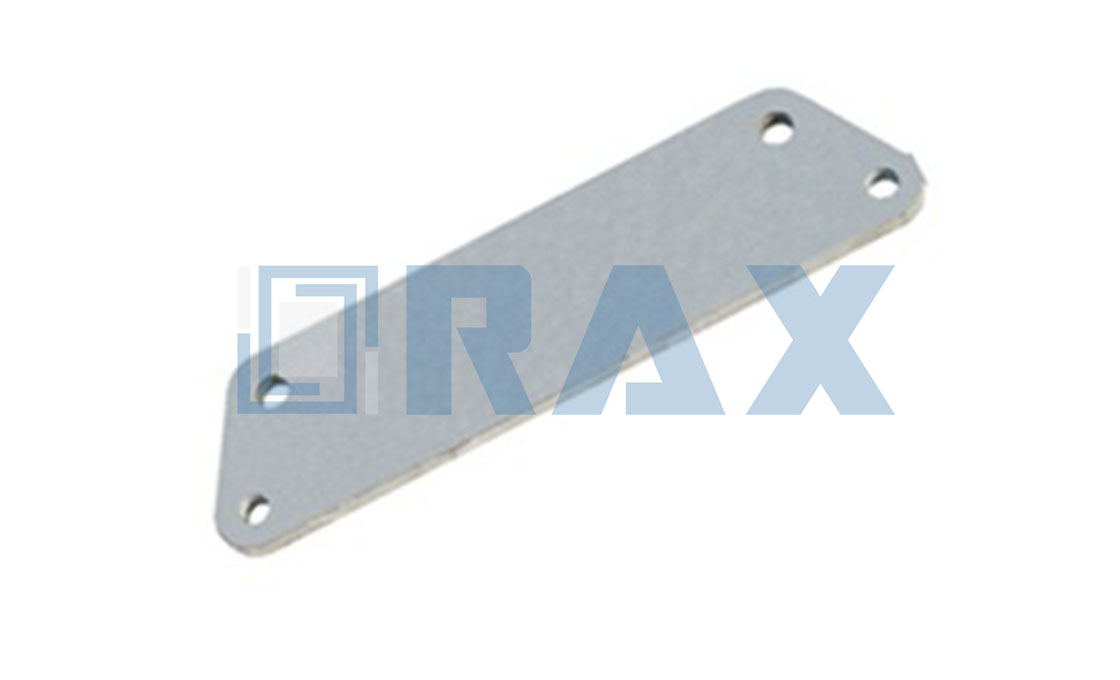Ball Clevis
Rax Industry ball clevis is one kind of string hardware that connects the socket insulator or socket tongue by the ball head. Rax Industry ball clevis is also called clevis eye.
According to the different shapes, there is another type called Y clevis. It’s because the structure is like the letter “Y”. On the one hand of the ball clevis is a ball head. On the other hand, there is a steel pin or hex bolt going through the two holes of the ball clevis. So that, there is space for the U clevis to connect to the ball clevis.
There are two different ways to make the ball clevis. In a market that requires low tension strength, the ball clevis is made by casting. While, in a market that requires high strength of more than 45kn, the ball clevis is drop forged.
The final process for the clevis eye is hot dip galvanized according to ISO 1461. To know the ISO 1461 standard, please click here.
To keep the size of the ball clevis accurate, Rax Industry QC department use “GO” Gauges and “NOT GO” gauges to control the tolerances on size.
To learn more about Rax Industry ball clevis, contact Rax Industry today. We’re proud to serve companies nationwide.

| Basic Data | ||||||||
| type | Dimension(mm) | Designated size of coupling | Rated failure load (KN) | Weight (kg) | ||||
| h | d1 | d2 | M | C | ||||
| Q-7U | 89 | 17 | 33.3 | 16 | 18 | 16 | 70 | 0.90 |
| Q-12U | 94 | 17 | 33.3 | 22 | 22 | 16 | 120 | 1.00 |
| Q-16U | 78 | 21 | 41.0 | 24 | 24 | 20 | 160 | 1.00 |
| Q-16UA | 80 | 21 | 41.0 | 24 | 26 | 20 | 160 | 1.12 |
| Q-21U | 102 | 21 | 41.0 | 27 | 30 | 20 | 210 | 1.35 |
| Q-30U | 110 | 25 | 49.0 | 36 | 38 | 24 | 300 | 2.14 |
Q1 :What’s the main process in making the Ball Clevis?
A: The main process in making the Ball Clevis is casting
Q2 : What’s the breaking load for the Ball Clevis?
A: According to different transmission line voltage, there are 70kn,120kn,160kn
Q3 : What’s the MOQ for Ball Clevis?
A: Generally the MOQ for Ball Clevis is 500pcs.
Q4 :Can I have a sample order for Ball Clevis?
A: Yes, we can provide the Ball Clevis sample for free, the delivery cost is usually paied by customer.
Q5 : What’s the payment terms for Ball Clevis?
A:The payment for Ball Clevis is usually T/T 30% as advance payment and 70% T/T before send the Ball Clevis.
Q6 : Will you charge for the tooling if you do the customized Ball Clevis ?
A: We are good at to develop new design for the customer, the tooling is usually paid by the customer, but if order quantity is more than 5000pcs, we will refund the tooling cost when confirm order.
Q7 : Can you send us a price list for all types of Ball Clevis ?
A: We have many customized types for Ball Clevis, so the price is always changing based on the raw material and different customer requirements. It’s better to give us a general description of your requirement, we will supply a best schedule for you.
Q8 : What’s your delivery time for Ball Clevis?
A: The delivery time for10000pcs Ball Clevis is usually 3 weeks. Pls contact with us,if you need an urgent order. We will supply a solution for you.
Ball Clevis: The Complete Guide
- Chapter 1: What is Ball Clevis?
- Chapter 2: Why should you Purchase a Ball Clevis?
- Chapter 3: Classification of Ball Clevis
- Chapter 4: Ball Clevis Parts and Components
- Chapter 5: Other Pole Line Hardware to Use with Ball Clevis
- Chapter 6: Some Technical Specifications of Ball Clevis
- Chapter 7: Ball Clevis Manufacturing Process
- Chapter 8: How to Install Ball Clevis
- Chapter 9: Conclusion
Most times, we hear about specific tools and wonder what they are.
Well, if you have been asking yourself what the ball clevis does, this is the guide to read.
In this complete guide, I will take you through an in-depth understanding of the uniqueness of this pole line hardware.
From the definition, classification, main components, manufacturing process, installation, etc. – by the end of this guide, you’ll be an expert on ball clevis.
Without much ado, let’s get to business.
What is Ball Clevis?
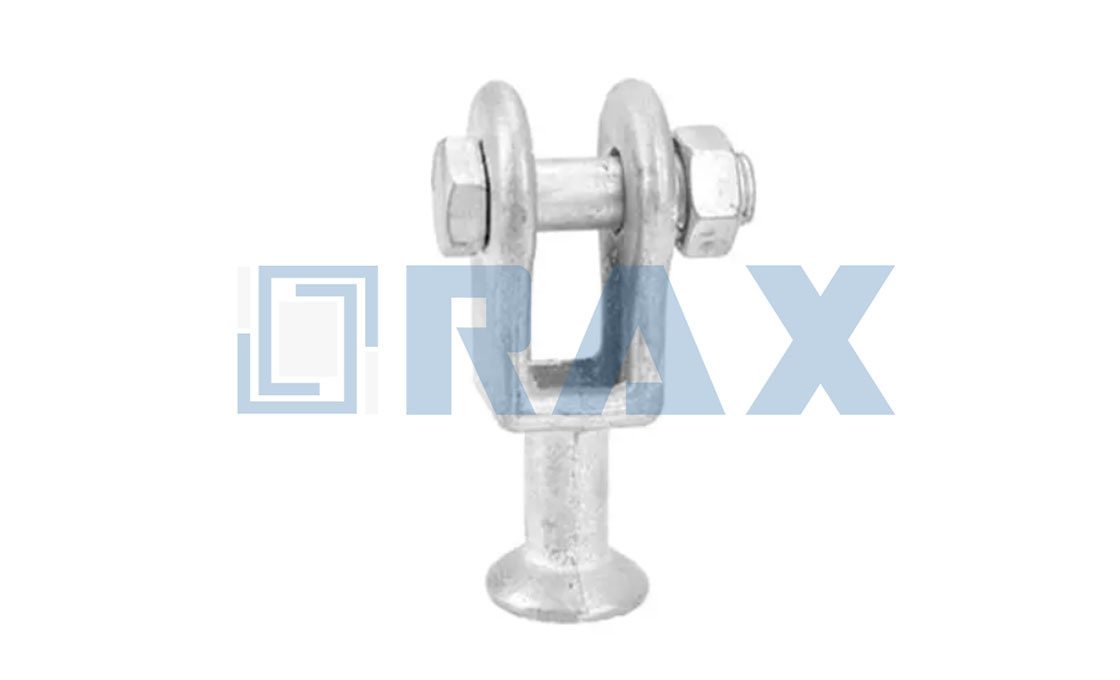 Ball clevis
Ball clevis
So now, if you have no idea what a ball clevis is – here is in figure 1.
Ball clevis is an accessory you can use in attaching or connecting ball and socket insulators to other linked tower hardware.
You can connect socket insulators or socket tongues by ball heads.
At times, you can also refer to a ball clevis as a clevis eye.
They are common in transmission lines and poles.
Why should you Purchase a Ball Clevis?
When it comes to transmission and distribution lines, you can use ball clevis for a range of applications.
Some of the main reasons why you need ball clevis include:
- Its unique design makes using it for transmission line installations very easy.
- They come in different sizes, making it possible for different installation types.
- With ball clevis, you can attach ball and insulators to insulators easily.
Besides, you can use it alongside other pole line hardware for a successful transmission line.
Of course, ball clevis come in a range of shapes and designs – it all depends on the application at hand.
Classification of Ball Clevis
This part of this guide is to make you know the different classifications of ball clevis.
Whenever you’re shopping for ball clevis, you can choose from:
Y ball clevis – This type is used mostly for pole line installations alongside other pole line hardware.
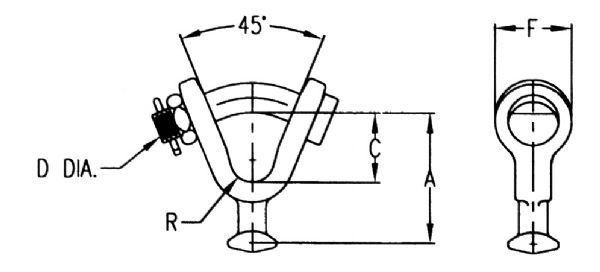
Y ball clevis
U clevis – Also used in transmission line installations.
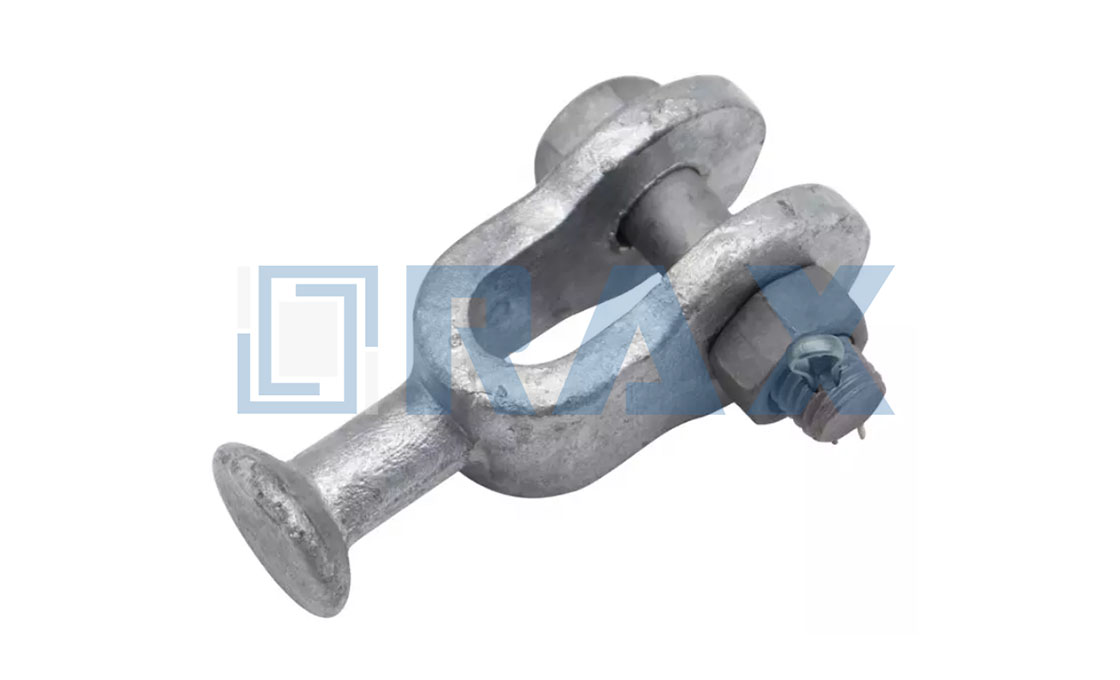 U ball clevis
U ball clevis
Insulator ball clevis – This type is used mainly for electric power line installations as is needed.

Ball clevis with an insulator
Ball clevis with a captive pin – This type of ball clevis has a locking pin you cannot remove it.
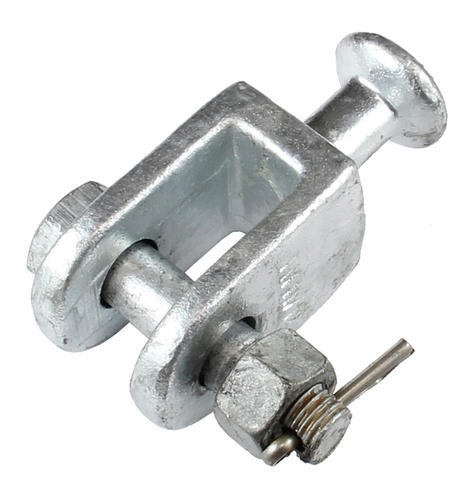
Ball clevis with pin
Ball Clevis Parts and Components
So, what makes up ball clevis?
I will take you through that in this section.
Below are the main parts and components of ball clevis:
- Ball – This is the round or oval shape at the bottom of the ball clevis. It makes holding and using the ball clevis easy.
- Steel pin – This part is designed to help hook or hold all insulators or sockets in place. You might be wondering how.
Well, after installing ball clevis, the steel pin needs to go through its two holes and then fasten to close transmission or power lines.
Clevis pins, therefore, come in different sizes and types.
It depends on the size of the clevis and the main applications.
- Hex bolt – This part fastens the steel pins at both sides of the clevis. You need to fasten it tightly, preventing them from falling off.
- Two holes – A steel pin will pass through these two holes before you fasten.
- Space – After inserting the steel pin through the holes using hex bolts, there will be spaces for Transmission lines and other components seat here.
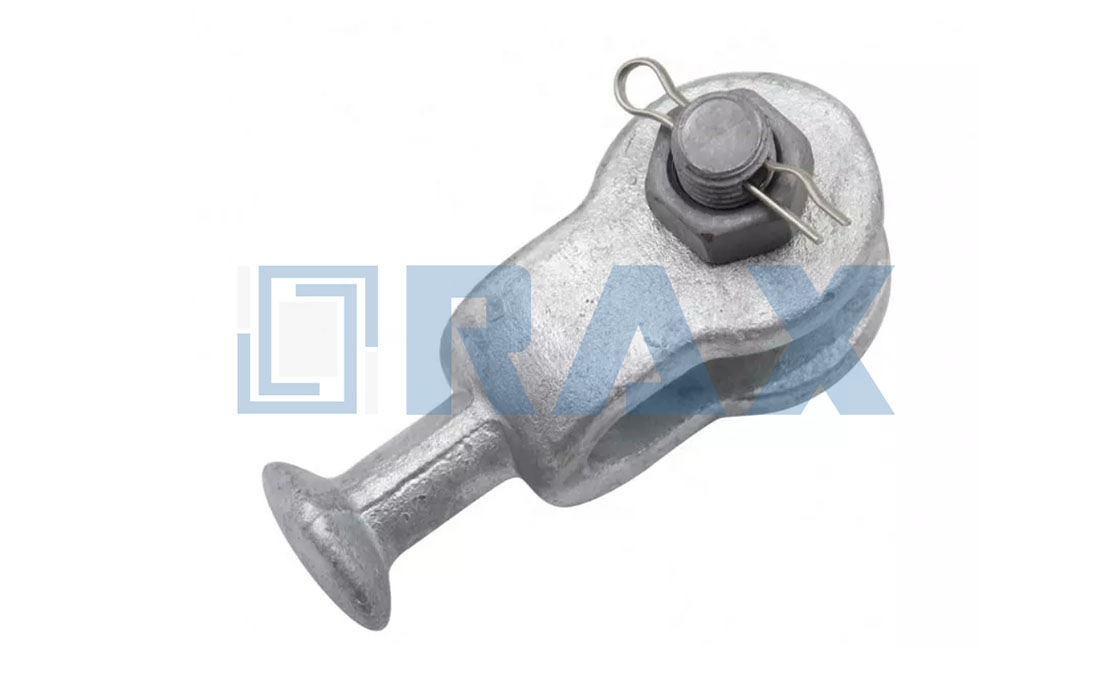 Side view of ball clevis
Side view of ball clevis
These parts and components make using ball clevis very easy to use.
Other Pole Line Hardware to Use with Ball Clevis
To complete a pole distribution and transmission line, you may need other hardware.
Once you know how to connect the ball clevis transmission and distribution will be simple and easy.
These pole line hardware include:
Some of such pole line hardware includes:
- ANSI class 52-3 insulators
- Socket tongues or Socket insulators
- Insulator balls
You can connect it to the pole line hardware above and many others depending on the specific installation.
Some Technical Specifications of Ball Clevis
It is time to know the specifications of ball clevis.
Knowing these specifications makes you understand what makes them unique.
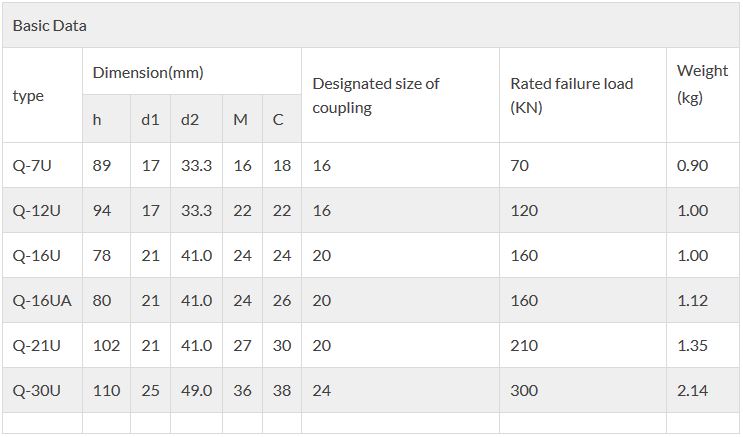
Technical specification of ball clevis
Read on for all the details you need to know.
- Design – The design is ball clevis is what makes it stand out. The structure is like a Y with a steel pin going through its holes.
After that, you can use hex bolts to fasten the pin. This way, it leaves some space for U clevis to be connected to the ball clevis.
- Finish – In its finish state, ball clevis is hot dip galvanized. This conforms to the ISO 1461 standards. It will assure you of quality, uniqueness, and strength.
- Material – Galvanized Steel
- Breaking load – The breaking load of ball clevis will differ according to its transmission line voltage which is 70kn, 120kn, and 160kn.
- Size – The size of the ball clevis should always be kept accurate. Its sizes will always differ from one application to another. So you can decide to place your orders based on the specific size you want.
Ball Clevis Manufacturing Process
Do you want to know how to manufacture ball clevis?
Well, the process is not as complicated as it might seem.
There are two main ways or methods of making ball clevis.
For low tension strength ball clevis, you can adopt the metal casting technique.
However, for high strength ball clevis (say more than 45kn), you can use the drop-forged manufacturing process.
Buying the casting made type of ball clevis for a job that required the drop forged types will lead to problems.
In short, before you adopt any manufacturing process, ensure you know the main application.
How to Install Ball Clevis
Installing ball clevis is simple and straightforward – I will show you how to do it.
Here we go:
- Be ready with all safety gear to protect yourself as you go through the installation process.
- Have all tools and other accessories as well as pole line hardware you will need to aid installation rightly set. This helps to make the installation process very easy.
- Go on by making sure all the other parts of the ball clevis are available. When you buy the ball clevis, it comes with all the parts in the box. So, you are the one to have it assembled. Assemble and de-assemble it to be very sure.
- Connect your ball clevis type to the specific pole line hardware.
- Fasten them with the steel pin and hex bolts on transmission lines.
- You can then have transmission or power lines extended through them step by step.
Always remember, the stronger you install your ball clevis, the better for the pole line installation.
Conclusion
At this juncture, it is quite clear that ball clevis plays an important role in the distribution and transmission lines.
From this guide, you can evaluate and buy ball clevis easily by evaluating designs and technical specifications.
Besides, for ball clevis manufacturers, I am confident you can choose the right production technique.
Here at Rax Industry, we design and manufacture high-quality ball clevis.
Talk to us today, for competitive prices.
FAQ
What is a ball clevis?
Ball clevis is also called clevis eye which is one kind of string hardware that connects the socket insulator or socket tongue by the ball head.
What is the classification of ball clevises?
- Y ball clevis - used mostly for pole line installations alongside other pole line hardware.
- U clevis –used in transmission line installations.
- Insulator ball clevis- mainly used for electric power line installations
- Ball clevis with a captive pin
How to make a ball clevis?
There are two different ways to make the ball clevis. In markets requiring low tension strength, the ball clevis is made by casting. While, in markets requiring high strength more than 45kn, it is drop forged.
What are the technical specifications of a ball clevis?
- Material – Galvanized Steel
- Size – Use “GO” Gauges and “NOT GO” gauges to control the tolerances on size.
- Surface treatment- Hot dip galvanized according to the ISO 1461
- Breaking load – according to different transmission line voltage, it is 70kn, 120kn, and 160kn.
How to choosing the best ball clevis manufacturer?
- Check whether the company is licensed
- The production capacity of the company
- Look for the reviews about the manufacturer
- Experience of the manufacturer
